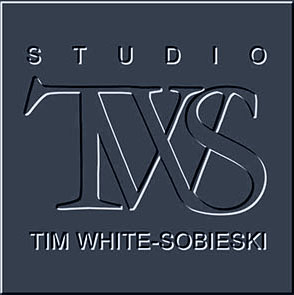
HOME | MEDIA FACADES| INTERIOR DESIGN | HOSPITALITY | AIRPORTS | RETAIL | ABOUT | CONTACT
Pioneering the Future of Light, Media, and Architecture
At TWS Group, we redefine the relationship between technology, architecture, and urban environments. Our work integrates advanced media technologies with cutting-edge light programming solutions, shaping the architecture of the future. We collaborate with architects, designers, and city planners to develop intelligent lighting ecosystems for visionary mega-projects—transforming public spaces into dynamic, immersive experiences.
From multi-network programming of city light infrastructure to AI-driven interactive environments, we push the boundaries of innovation. Our expertise extends to sustainability-driven technologies, integrating energy-efficient lighting, adaptive smart grids, and data-responsive illumination to enhance urban landscapes. As cities evolve, we craft solutions that blend aesthetics, technology, and environmental responsibility—illuminating the world in ways never seen before.
TWS Group, originally Studio TWS, was established by Tim White-Sobieski in 1983 and works as a multidisciplinary design and production studio. It incorporates Art Studio TWS, light production department Solaris Inc., yacht design studio TWS Yachts, automation and engineering research General Robotics Inc. and interior design department Renaissance Designs Co.
The company operates in New York, Milan, Monte Carlo and Berlin.



Illuminating the Future of Architecture and Urban Spaces
At TWS Group, we pioneer the integration of new media technologies and advanced light programming solutions to shape the architecture of the future. Our vision extends beyond conventional design, focusing on the fusion of light, digital media, and interactive experiences that redefine how cities, buildings, and public spaces come to life. We collaborate with leading architects, designers, and urban planners to create immersive environments where technology enhances spatial narratives, transforming structures into dynamic, responsive ecosystems. From large-scale urban developments to bespoke architectural projects, we bring a forward-thinking approach that aligns creativity with innovation.
Our expertise lies in multi-network programming of city light infrastructure, enabling real-time adaptive illumination across urban landscapes. By utilizing AI-driven control systems, dynamic data mapping, and sensor-based lighting grids, we create environments that respond to movement, climate, and human interaction. These solutions enhance the functionality and beauty of urban spaces while optimizing energy efficiency and sustainability. Our work is at the intersection of technology and design, where light becomes an intelligent medium—capable of shaping moods, guiding pathways, and enhancing architectural storytelling on a grand scale.

LED MEDIA FAÇADE SOLUTIONS
Studio TWS is a highly specialized company providing world-leading consultancy, design and content creation for even the most challenging LED Media Façade, Mediatecture and LED lighting projects. We collaborate closely with architects, lighting designers and construction engineers, to specify and design LED display and lighting solutions which facilitate the design and realization of the unique projects of their clients.
We aim to create facade solutions where lighting and media weave seamlessly into architecture and become an integrated part of the building and the cityscape. Architecture has always been a communication medium. By adding lighting to architecture, we enable people to connect, interact and communicate with each other and their surroundings. At the same time it blurs the line between sender and receiver by facilitating new means of interaction and co-creation.
Sustainability is central to our approach. We integrate the latest advancements in energy-efficient lighting, solar-powered installations, and smart grids that reduce environmental impact while enhancing urban aesthetics. Our research-driven methodology incorporates modular, programmable LED technologies, kinetic light sculptures, and bio-integrated lighting solutions that harmonize with nature. By implementing low-energy, high-performance systems, we support the vision of future cities that balance artistic expression with ecological responsibility, ensuring that innovation does not come at the cost of sustainability.
Beyond illumination, our work extends into immersive digital experiences, multimedia façades, and next-generation interactive installations. We develop large-scale projection systems, synchronized light-and-video narratives, and data-driven urban art that create new ways for people to engage with their surroundings. By merging architecture with cognitive and responsive technologies, we are shaping a future where urban environments are not only visually captivating but also intelligent, sustainable, and deeply connected to human experience. At TWS Group, we are not just designing light—we are designing the future of cities.

TWS Group operates through Studio TWS, our specialized subsidiary providing turnkey multimedia and art solutions for architectural projects—whether in development or already built. We work closely with real estate developers, architectural firms, interior designers, and urban planning commissions to integrate art, lighting, and multimedia into the fabric of contemporary spaces.
With studios in New York, Berlin, Miami, and Monaco, TWS Group has been at the forefront of art, design, and technology since 1983, pioneering innovations alongside the digital evolution of Apple and Microsoft. We have collaborated with renowned architectural firms such as Zaha Hadid Architects, Peter Marino Architects, Eric Carlson/Carbondale, Shigeru Ban Architects, and David McNulty/Louis Vuitton Malletier Architects. Our lighting industry partnerships include Zumtobel Group, Philips, Osram-Sylvania, Barco, Martin Professional, and Targetti.
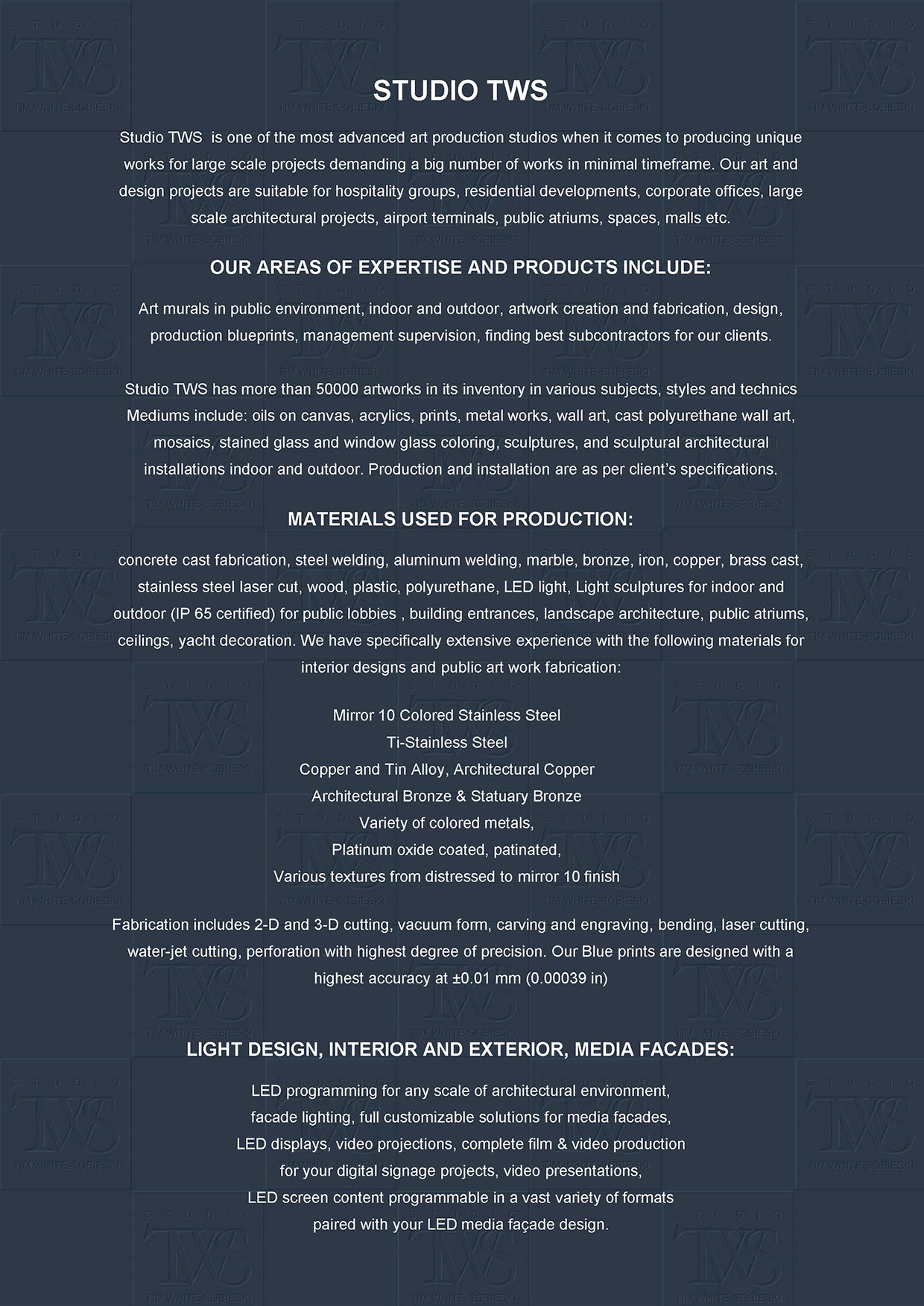

Location:
Shopping Center in Miami.
Project:
Outdoor multimedia façade installation
Product:
MODULORPIX® TWS
The façade of the Shopping Center in Miami demonstrates that an image or a text message require a systematic matrix while the pixel elements can have any geometric form. This insight allows for many design options. Behind the structure there is a constant net of LED lights.
The transparent media façade mesh MODULORPIX® designed by TWS Studio in collaboration with Cree and Osram allows the display from moving patterns to high-resolution video content on new or existing façades.
The tailor-made media façade system has a modular structure and can therefore be scaled easily to any size and arrangement. The wire mesh façade can completely or partially be designed as a media façade. In addition, areas with different RGBW LED resolutions can be realized within one project. For even more customization, the LED profile housing and the stainless steel mesh elements can be adapted with a variety of colors.
TECHNICAL DATA:
Light source: |
OSRAM / Cree SMD RGBW LEDs |
Color resolution: |
3 x 16-bit (gamma correction) |
Max. beam angle: |
120° x 120° adjustable by lenses |
LED Pitch horizontal: |
50 mm, 100 mm, 200 mm |
LED Pitch vertical: |
Free selectable |
Brightness: |
> 10000 nit (cd/m2) |
Housing: |
Aluminum |
Operating Temperature: |
-30°C to +60°C |
Storage Temperature: |
-35°C to +70°C |
Environment: |
Outdoor (IP67), UV resistant |

Location:
Office building in New York, NY.
Project:
Outdoor multimedia façade installation
Product:
MODULORPIX® TWS
Perfectly adapted for outdoor use, the daylight-suitable media façade system offers various options for challenging requirements of existing architectural style and weather conditions. Project was conceived with the images created by “MovingPainting® light LED programming code, a trademark style and program from TWS studios, a project that continuous for 3 decades with a vast spectrum of code variables, styles and technological applications.
MODULORPIX® high-quality architectural mesh from TWS studio has been combined with the latest LED technology to develop media façades. The result is a high-performance, versatile LED system which is embedded into the architectural structure of a building.
TECHNICAL DATA:
Light source: |
OSRAM / Cree SMD RGBW LEDs |
Color resolution: |
3 x 16-bit (gamma correction) |
Max. beam angle: |
120° x 120° adjustable by lenses |
LED Pitch horizontal: |
50 mm, 100 mm, 200 mm |
LED Pitch vertical: |
Free selectable |
Brightness: |
> 10000 nit (cd/m2) |
Housing: |
Aluminum |
Operating Temperature: |
-30°C to +60°C |
Storage Temperature: |
-35°C to +70°C |
Environment: |
Outdoor (IP67), UV resistant |
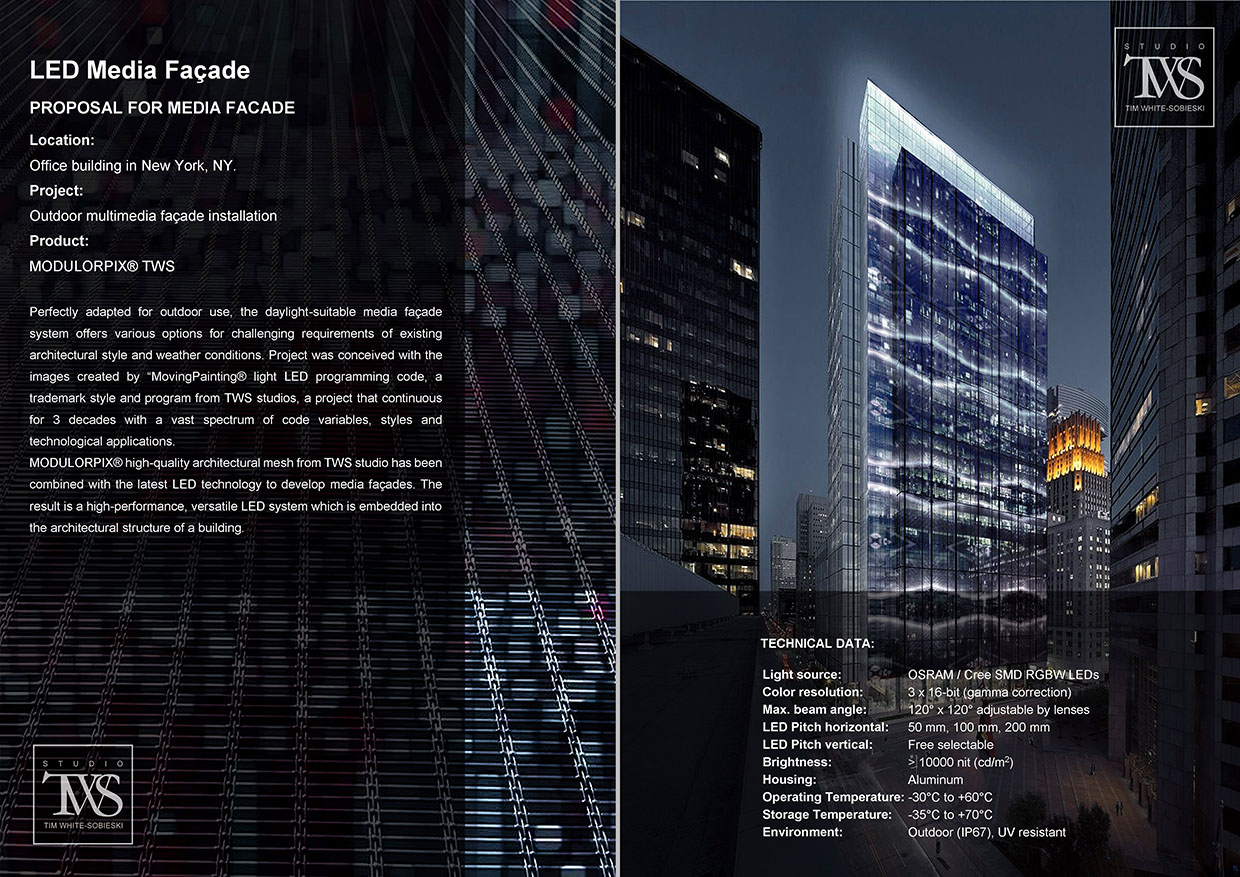
LED Media Façade
Paris, France
MODULORPIX® designed by TWS Studio
The façade is wall-covered with a translucent weaved metal fabric. The metal shield serves as framework for LED panels. Integrated modular LED panels show pre-rendered motion content in advanced resolution.
With this architecture, client established a solution that fits future demands to enlarge the publishing surface, with best economic and ecological performances for coming decades.
The supreme quality stainless steel components, ensure a strong, long lasting, wind and weather resistant façade frame. LED frame is a cost-effective achievement in the field of media façades. It is a new style to broadcast high quality motion pictures in a solid metal mesh framework on a large surface area. The LED area is modular and can be enlarged.
Weaved architectural fabrics / LED meshes are produced of first class wire of European suppliers. Mainly produced of recycled materials. Utilized materials are very sustainable, easy to clean and have low maintenance cost.
Approach to Airport Interior Design: Engineering the Future of Transit Spaces
Airports are more than transit hubs—they are microcosms of global movement, cultural exchange, and cutting-edge design. As the first and last impression of a city or country, airports must embody functionality, efficiency, and aesthetic grandeur. The fusion of architecture, engineering, automation, and immersive multimedia transforms modern airports into seamless, intelligent environments that anticipate the needs of passengers while enhancing the travel experience.
Modern airport design embraces advanced construction methodologies that prioritize sustainability, modular adaptability, and resilience. Smart materials, self-healing concrete, and 3D-printed structures are revolutionizing airport infrastructure. The use of prefabricated modular systems accelerates construction timelines, reduces waste, and enhances structural efficiency.
Adaptive architecture integrates kinetic elements—such as responsive facades that adjust to climate conditions and terminal layouts that evolve with passenger flow. New-age terminal designs incorporate open-air elements, biophilic features, and energy-efficient materials that reduce carbon footprints while maintaining architectural splendor. Airports of the future will no longer be static; they will be intelligent, adaptable, and self-sustaining.
Aesthetic innovation in airport design balances visual grandeur with intuitive spatial planning. The evolution of airport interiors favors organic flow, open spaces, and intuitive wayfinding, ensuring a stress-free passenger experience.
Architectural elements draw inspiration from nature, with fluid forms, vast skylights, and panoramic viewing lounges. Public art installations, multimedia projections, and dynamic light compositions engage passengers, transforming waiting areas into cultural experiences. Lounge interiors evolve into multi-functional sanctuaries, offering private relaxation spaces, interactive entertainment zones, and AI-driven concierge services.
Automation is redefining airport interiors, reducing congestion while enhancing security and convenience. AI-driven systems streamline passenger flow through biometric check-ins, facial recognition immigration, and contactless boarding.
Robotic assistants guide travelers through terminals, offering multilingual support and real-time updates. Automated luggage handling ensures seamless baggage transfers, reducing delays and loss risks. AI-powered air filtration systems adapt to passenger volume, ensuring optimal air quality and energy efficiency. Smart airport infrastructure incorporates predictive analytics, optimizing gate assignments, flight schedules, and real-time crisis management.
(Korean: 김포국제공항 [kimpʰoɡuktɕ͈eɡoŋhaŋ]), commonly known as
Gimpo Airport (IATA: GMP, ICAO: RKSS) (formerly and originally Kimpo International Airport), is
located in the far western end of Seoul, some 15 km (9 mi) west of the Central District of Seoul.
Address: 112 Haneul-gil, Gangseo-gu, Seoul, South Korea, Code: GMP
Project scope: two synchronized video walls in the central transit hall. Project resulted in 4 video
programs playing in loop comprised of 108 synchronized video channels, currently the world record
for number of synchronized video channels in one video artwork.
Interior design is more than just aesthetics—it is the art and science of shaping environments that enhance human experience, functionality, and well-being. At the core of our approach lies a deep commitment to innovation, craftsmanship, and intelligent design, ensuring that each space we create is not only visually compelling but also deeply connected to its purpose, surroundings, and users. From grand atriums and public spaces to hospitality and corporate interiors, our philosophy integrates cutting-edge technology, sustainable materials, and a timeless sense of elegance.
Public spaces serve as focal points for communities, fostering interaction, inspiration, and engagement. Our designs for city atriums, transit hubs, and cultural centers emphasize fluidity, light, and materiality. Natural light is a key element, often enhanced by large-scale glass facades, skylights, and interactive LED panels that respond to movement and time of day. The integration of custom sculptures, immersive multimedia installations, and adaptive seating configurations transforms these spaces into living, breathing environments that evolve with their users.

The Fusion of Art, Design, and Architecture
In our practice, installation art and public art are not merely decorative elements; they are essential components of a city’s identity, shaping the emotional and aesthetic experience of those who encounter them. Our approach to art and design is deeply rooted in the idea of symbolic elements—each artwork we conceive is more than a visual object; it is a narrative, a statement, a defining presence within its architectural and urban surroundings. We believe that public art has the power to transform environments, redefine spaces, and create lasting cultural landmarks that engage and inspire communities.
Hospitality spaces must provide a seamless blend of comfort, luxury, and experience-driven design. Our hotel interiors combine elegant spatial planning, rich textures, and cutting-edge lighting solutions to create immersive atmospheres. Restaurants are designed with a keen understanding of flow, acoustics, and thematic aesthetics, ensuring a unique sensory experience for guests. We emphasize custom-built furniture, statement lighting pieces, and curated artwork, transforming hospitality spaces into vibrant hubs of culture and elegance.
Our approach to interior design is rooted in the belief that spaces should inspire, adapt, and evolve with their users. Whether shaping grand civic spaces, luxurious residences, or technologically advanced corporate environments, we bring visionary thinking, material mastery, and state-of-the-art innovation to every project. With a keen eye on AI-driven design, smart automation, and sustainable practices, we are constantly redefining what is possible in contemporary interior architecture.
By combining aesthetic refinement with cutting-edge technology, we create timeless interiors that are not only functional but also transformational—pushing the boundaries of what spaces can be and how they enhance human experience.
At TWS Studio, our expertise in LED lighting programming and design goes far beyond conventional lighting solutions. We specialize in creating complex, interconnected, and intelligent lighting ecosystems, merging various technologies into a unified coding structure. Unlike typical lighting design firms that focus on individual products or limited systems, our approach is holistic, scalable, and fully customized to each project’s needs.
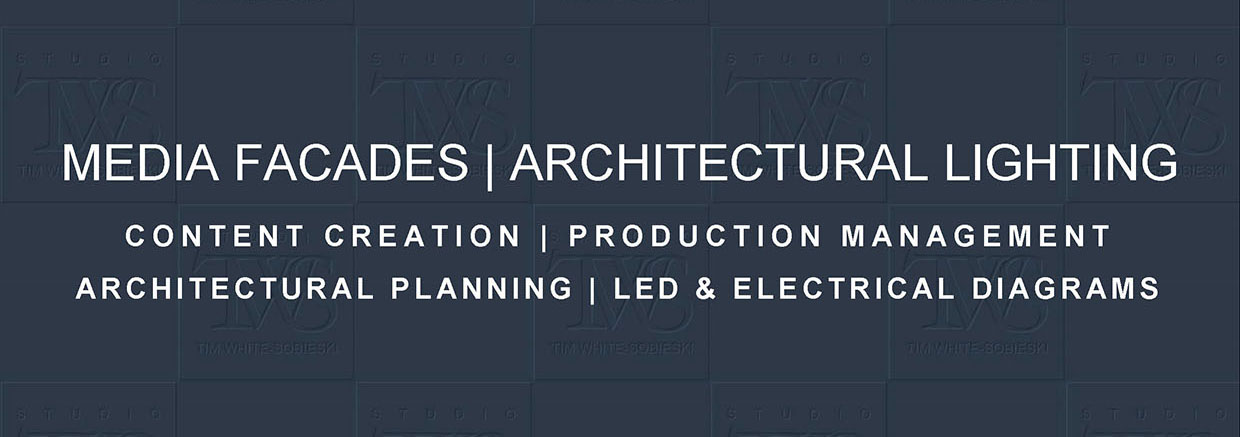
By mastering all facets of LED lighting—from design and engineering to programming and control—we ensure that each project we deliver is an intelligent, responsive, and immersive experience, unmatched by conventional lighting firms.

The future of LED programming is limitless—a borderless language that unites architecture, data, and interactive technology into a single living entity. At TWS Studio, we stand at the forefront of this revolution, pushing the boundaries of what’s possible with LED lighting, from artistic installations to full-scale urban infrastructure.
Our turnkey LED ecosystems, AI-driven programming, and infinite scalability set us apart, making us the go-to innovators for the world’s most complex and advanced lighting environments. Whether it’s a digital cityscape, an immersive public art installation, or a multimedia-integrated building façade, we create the future of light today.

As LED technology continues to evolve, its role in architecture, urban planning, and multimedia is set to expand exponentially. The next generation of LED applications will redefine how cities breathe, how buildings communicate, and how light interacts with its surroundings.
Interactive & Data-Driven LED Environments:
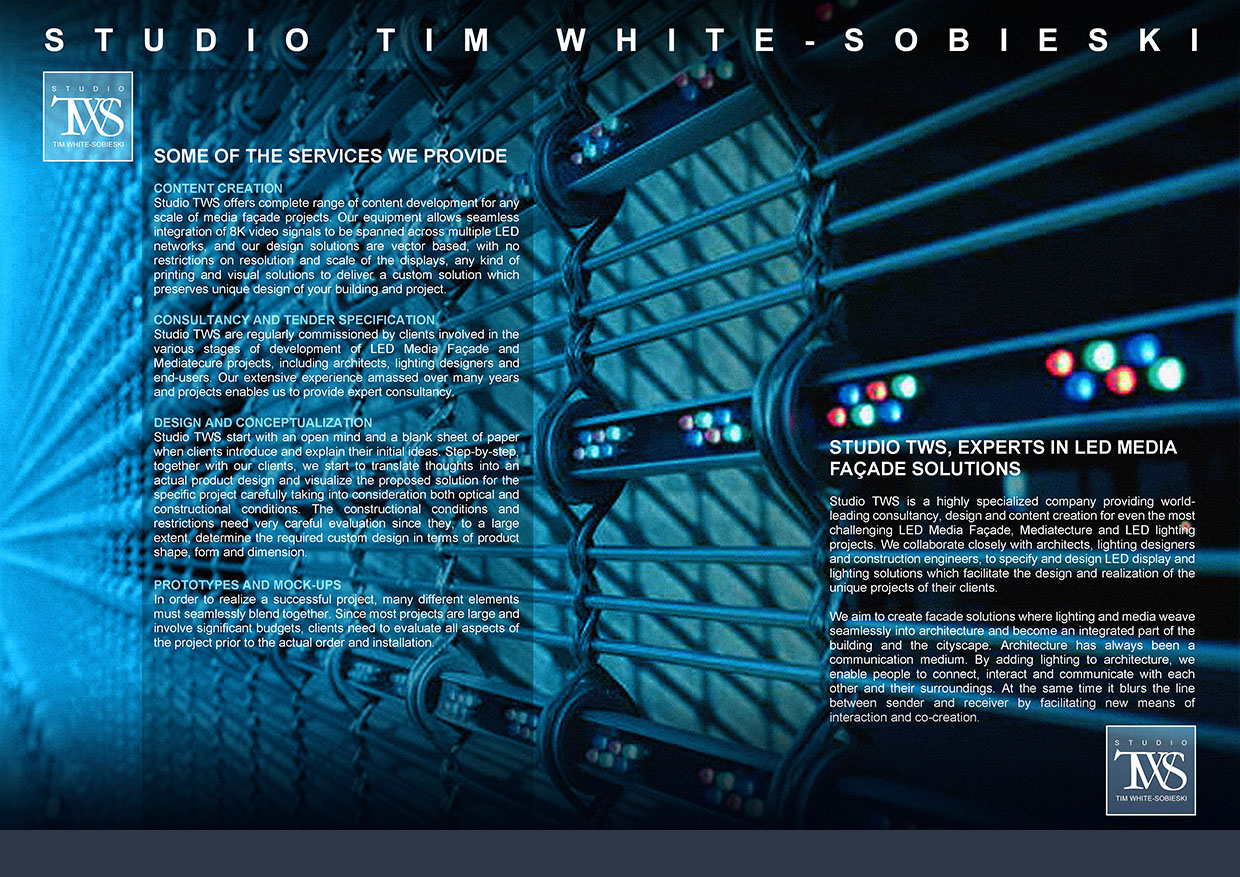
Lighting in airport interiors is no longer purely functional—it defines mood, movement, and identity. Dynamic lighting adjusts to circadian rhythms, reducing jet lag and enhancing passenger well-being. Programmable LED installations create immersive environments, transforming security checkpoints, lounges, and retail spaces into visually engaging zones.
Illuminated pathways subtly guide passengers through terminals, ensuring intuitive navigation. Projection mapping and light sculptures enhance key areas, creating unique visual experiences while maintaining operational clarity. High-efficiency OLED lighting panels embedded in architectural surfaces offer soft, diffused illumination, reducing glare and energy consumption
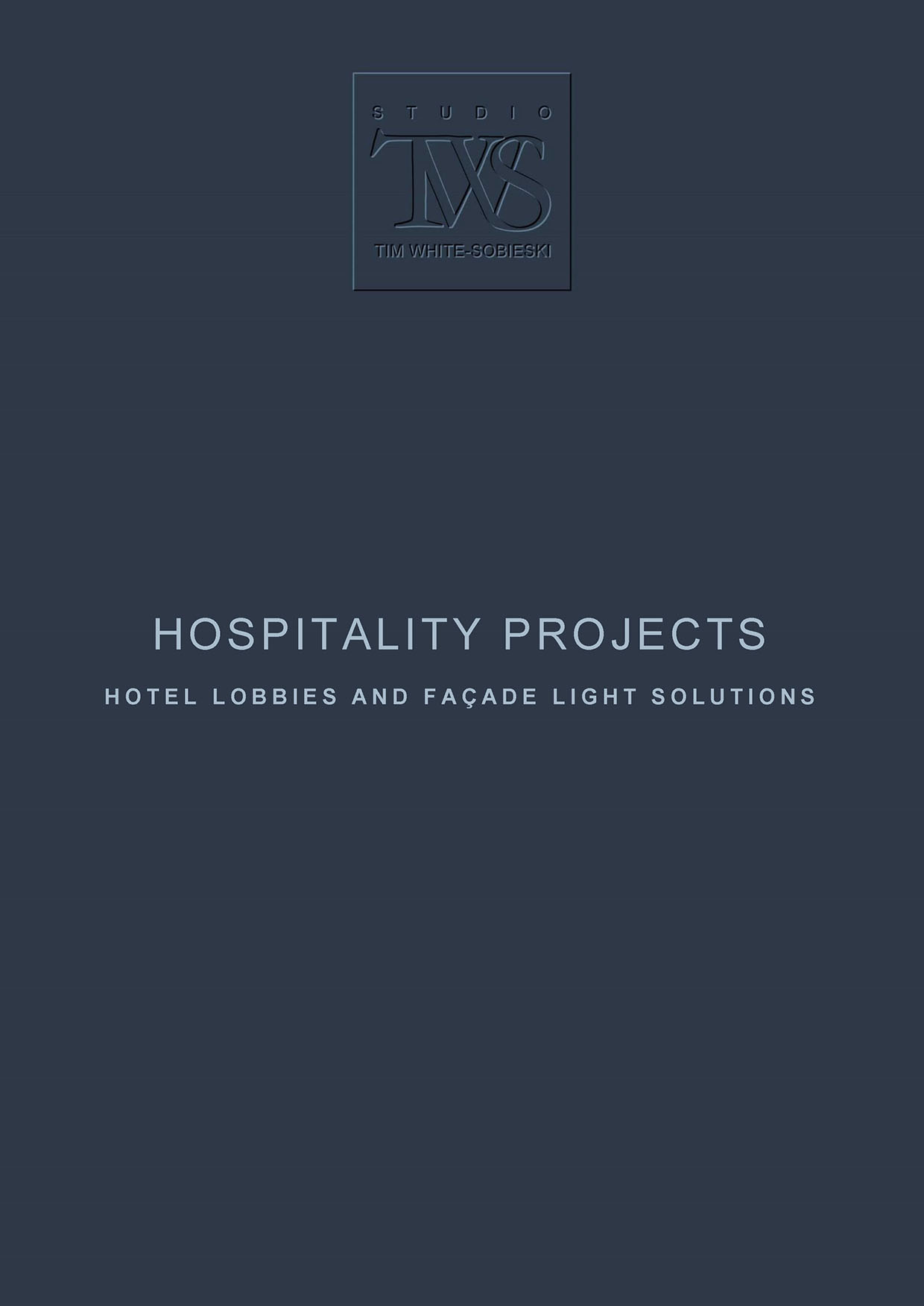
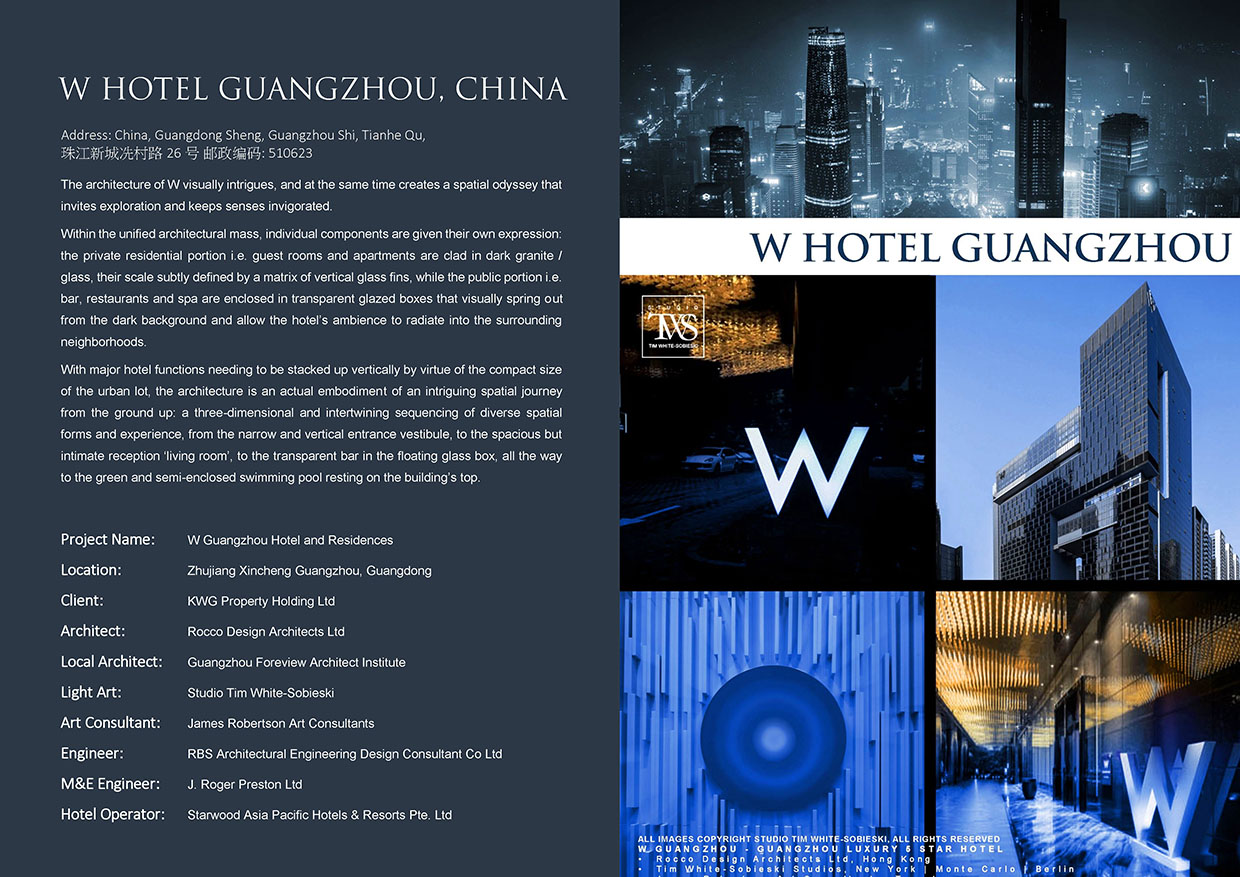
Lighting in airport interiors is no longer purely functional—it defines mood, movement, and identity. Dynamic lighting adjusts to circadian rhythms, reducing jet lag and enhancing passenger well-being. Programmable LED installations create immersive environments, transforming security checkpoints, lounges, and retail spaces into visually engaging zones.
Illuminated pathways subtly guide passengers through terminals, ensuring intuitive navigation. Projection mapping and light sculptures enhance key areas, creating unique visual experiences while maintaining operational clarity. High-efficiency OLED lighting panels embedded in architectural surfaces offer soft, diffused illumination, reducing glare and energy consumption
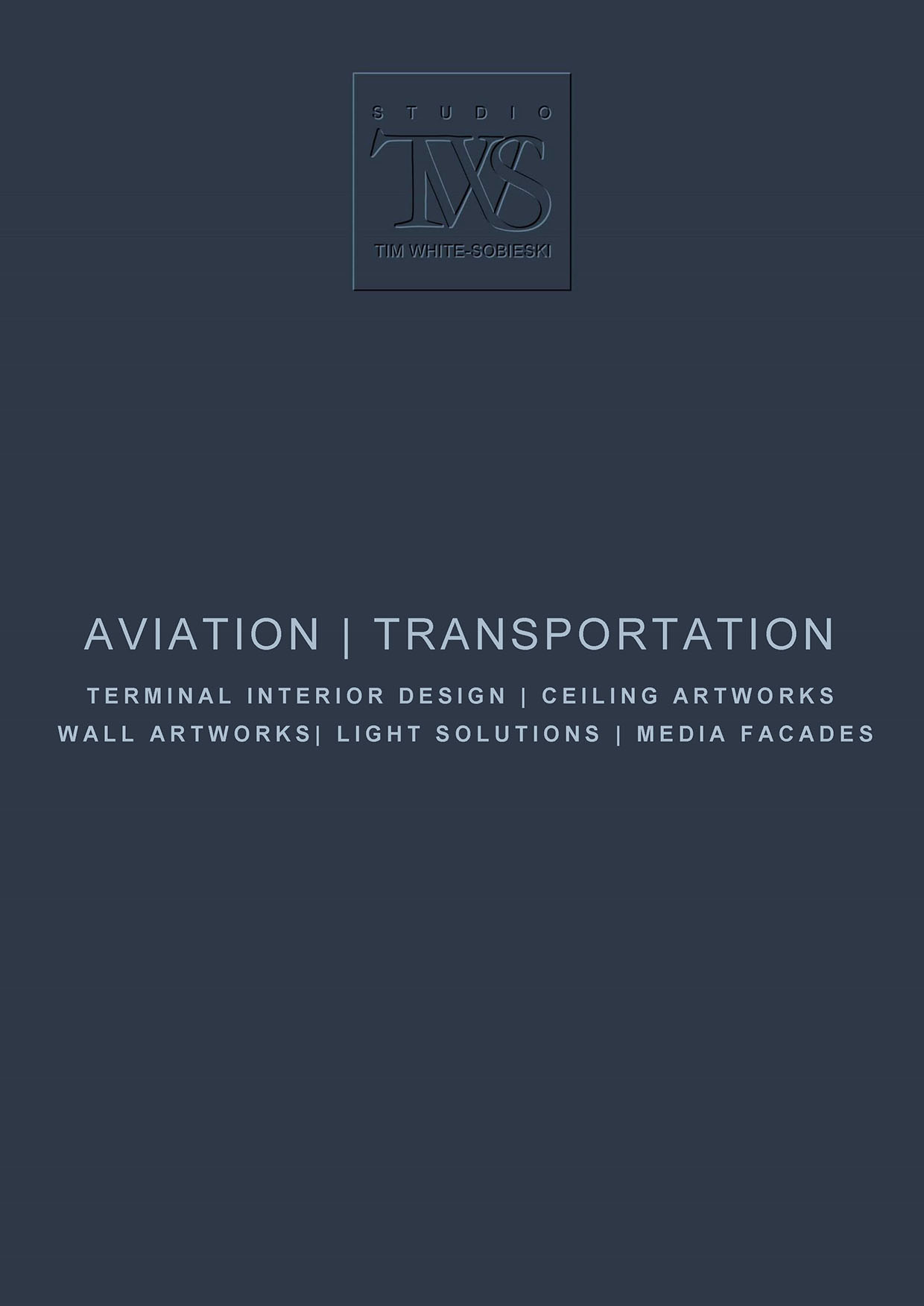
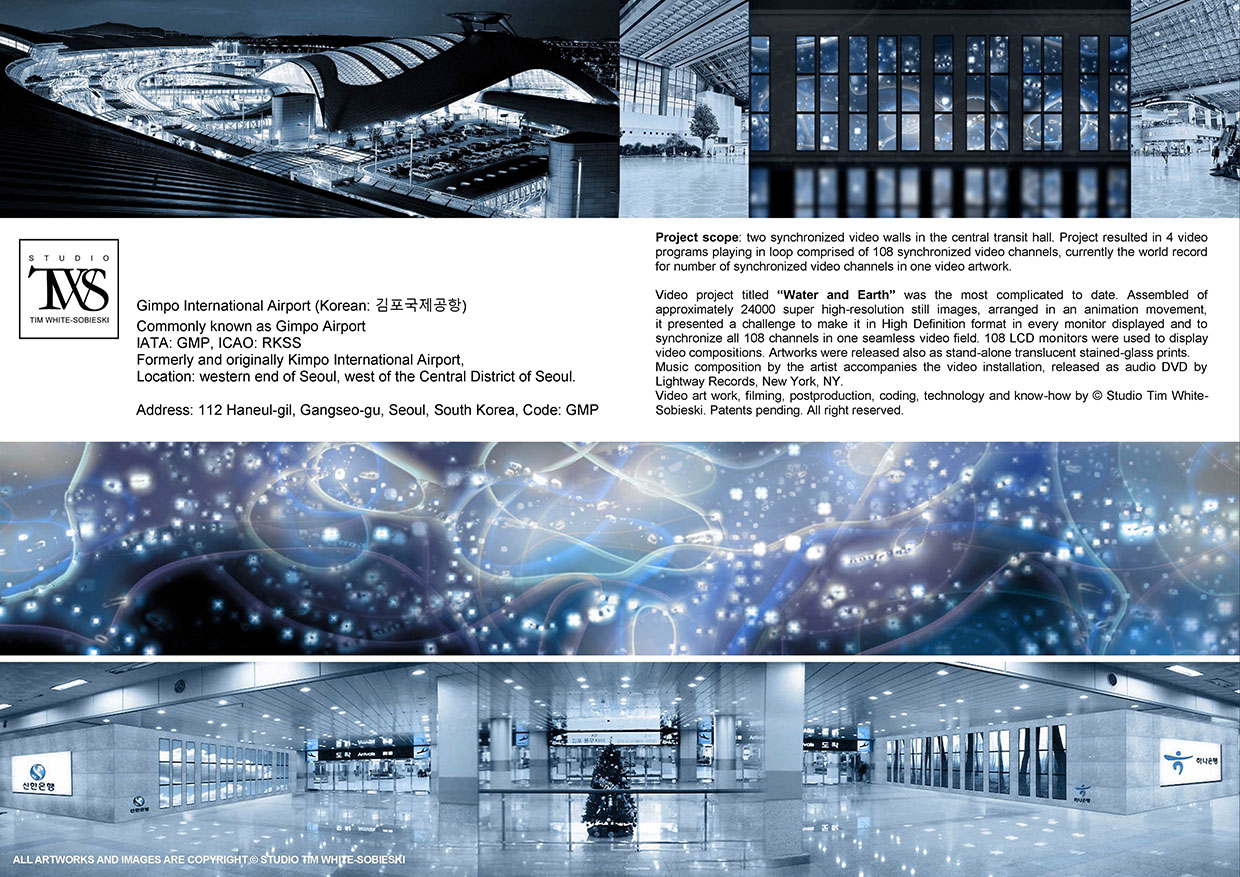
Airports are evolving into digital ecosystems where multimedia design seamlessly merges with informatics. Large-scale digital displays offer dynamic, AI-curated content, including personalized flight updates, interactive maps, and entertainment.
Holographic concierge systems provide real-time assistance, replacing static information desks. Immersive video walls transform waiting areas into cultural showcases, displaying digital art, historical narratives, and interactive storytelling experiences. AI-driven voice command kiosks facilitate real-time travel assistance, multilingual translation, and security guidance.
Airport interiors are no longer just transit spaces—they are immersive environments that blend advanced engineering, intelligent automation, and human-centric design. As technology evolves, the airport experience will become increasingly seamless, intuitive, and personalized, shaping the future of global travel. By embracing AI, automation, sustainable architecture, and immersive multimedia, airports will transform into intelligent, living ecosystems that redefine the boundaries of design and innovation.
Envisioning airport development for the next millennium requires an ultra-futuristic approach. Vision 3000 integrates hyperloop transit systems within airports, merging air and ground transportation seamlessly. Underground autonomous vehicle corridors reduce surface congestion, while vertical take-off and landing (VTOL) hubs accommodate next-generation aircraft.
Hyperconnected digital ecosystems integrate passenger behavior analytics, offering personalized experiences via AI-driven recommendations. Augmented reality (AR) navigation replaces traditional signage, offering holographic guidance. Digital twin technology allows real-time monitoring and predictive maintenance, ensuring operational efficiency with minimal human intervention.


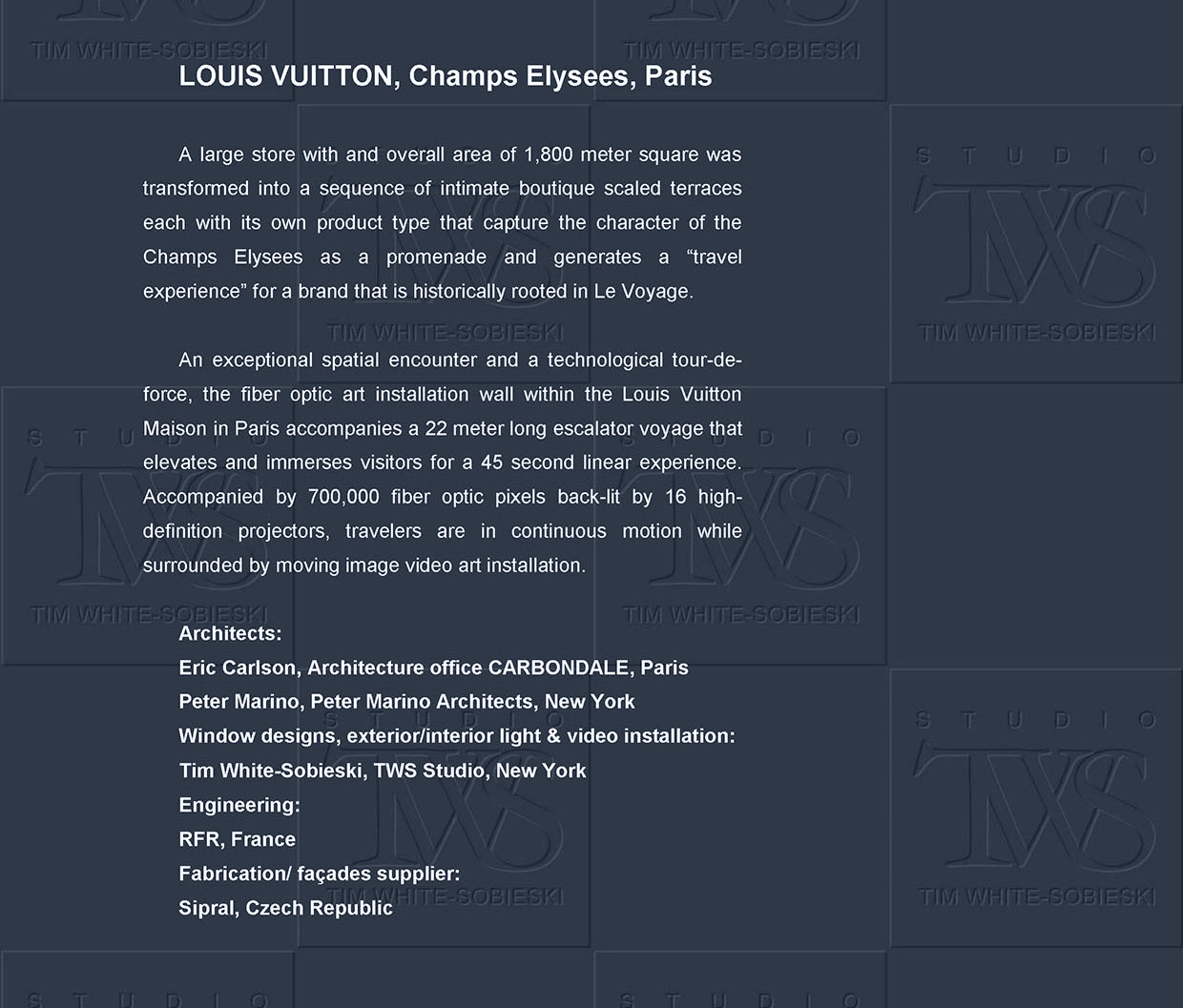
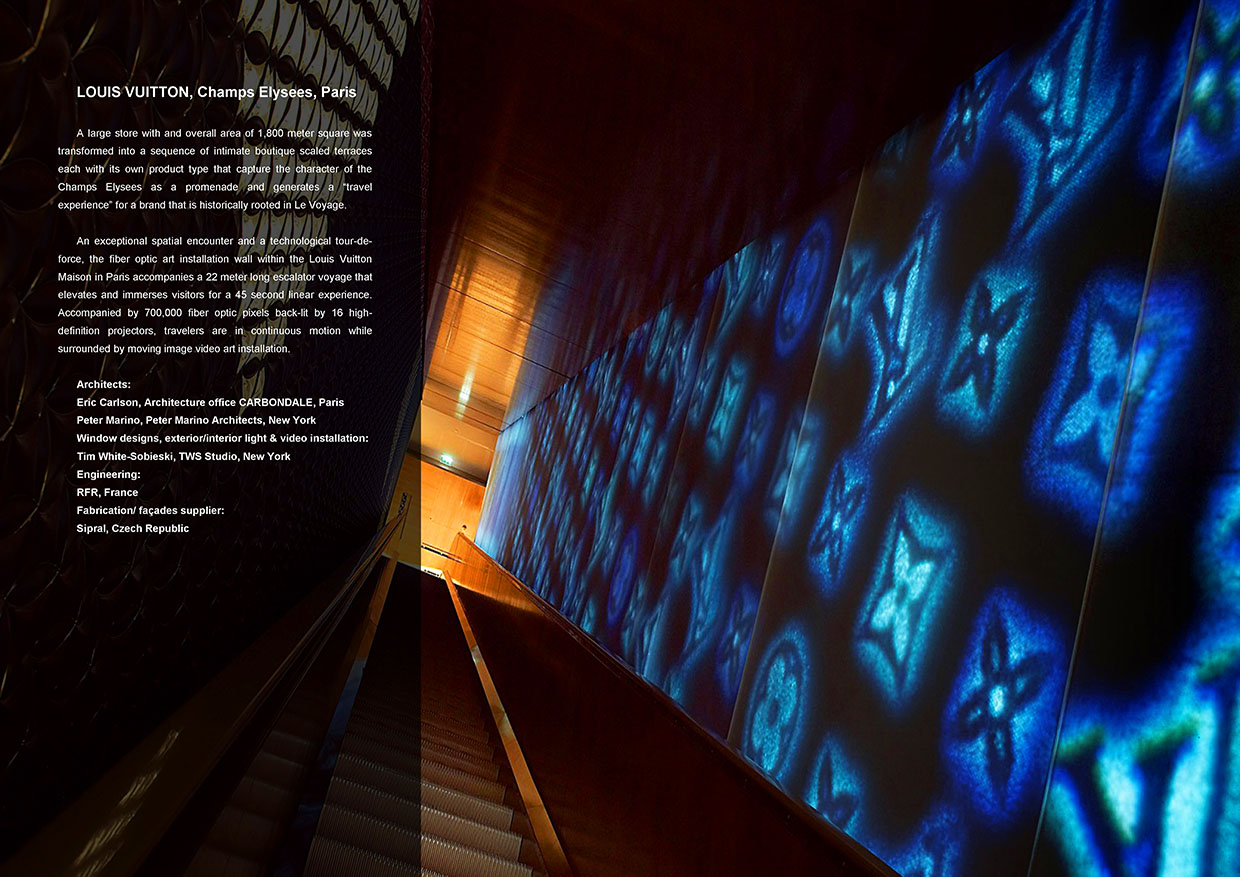
Studio TWS offers complete range of content development for any scale of media façade projects. Our equipment allows seamless integration of 8K video signals to be spanned across multiple LED networks, and our design solutions are vector based, with no restrictions on resolution and scale of the displays, any kind of printing and visual solutions to deliver a custom solution which preserves unique design of your building and project.
Studio TWS are regularly commissioned by clients involved in the various stages of development of LED Media Façade and Mediatecure projects, including architects, lighting designers and end-users. Our extensive experience amassed over many years and projects enables us to provide expert consultancy.
Studio TWS start with an open mind and a blank sheet of paper when clients introduce and explain their initial ideas. Step-by-step, together with our clients, we start to translate thoughts into an actual product design and visualize the proposed solution for the specific project carefully taking into consideration both optical and constructional conditions. The constructional conditions and restrictions need very careful evaluation since they, to a large extent, determine the required custom design in terms of product shape, form and dimension.
In order to realize a successful project, many different elements must seamlessly blend together. Since most projects are large and involve significant budgets, clients need to evaluate all aspects of the project prior to the actual order and installation.

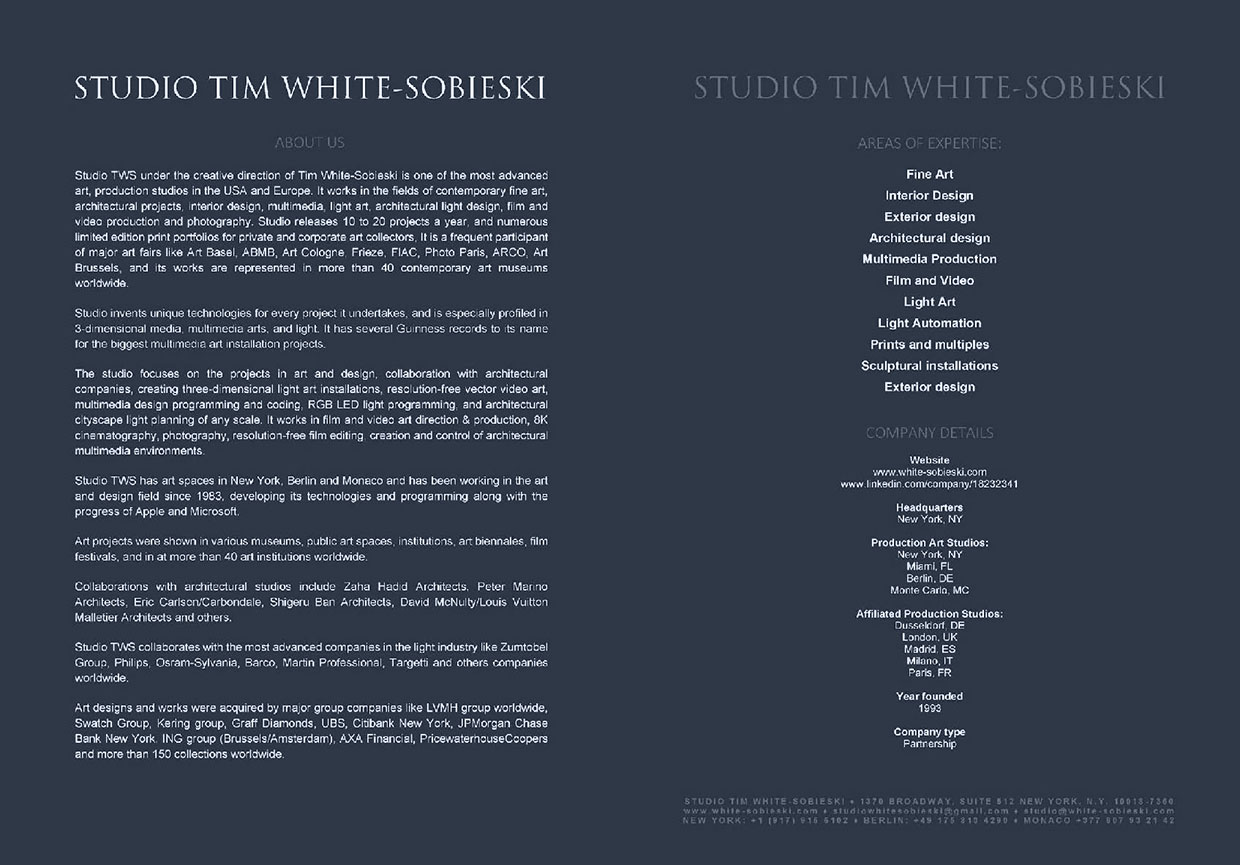
CONTACT:
STUDIO TWS
ART + ARCHITECTURE
LIGHT & MULTIMEDIA
1370 Broadway
New York NY 10018 USA
T US +1 917 886 5201
Monte Carlo office:
T FR: +33 787 000 242
Milan office:
T IT: +39 334 223 8312
Berlin office:
T DE +49 160 426 1550
board@twsgroup.org
www.twsgroup.org
HOME | MEDIA FACADES| INTERIOR DESIGN | HOSPITALITY | AIRPORTS | RETAIL | ABOUT | CONTACT